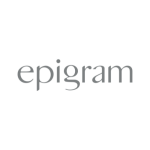The Content Bottleneck: Why Legal Marketing Teams Lose Time, and How to Fix It – Epigram
In most professional services marketing teams, one issue consistently slows down delivery, and it has nothing to do with design capability or creative ambition. Content is often the last piece to arrive, the least aligned, or the hardest to finalise. Deadlines are set, designers are ready, but the copy remains incomplete, unclear, or caught in rounds of internal approval.
For teams working with external design partners, this friction compounds quickly. What should be a smooth creative workflow turns into compressed turnaround times, unnecessary pressure on both sides, and work that may not shine as brightly as it could. Legal marketers know this pattern all too well.
At Epigram, we refer to this as the content bottleneck and after years of supporting UK, US, and global law firms, we’ve seen just how much it impacts efficiency, quality, and morale.
Why content delays are so common in design projects
Across the legal sector, the causes tend to follow similar themes:
- Fragmented approval chains
Multiple partners, knowledge owners, and BD stakeholders often need to sign off the same piece of content. Without clarity around who approves what and by when, the timeline slips before design has even begun.
- Briefs that arrive incomplete or inconsistent
Even small omissions (missing headlines, unclear hierarchy, undefined audience or purpose) force designers to make assumptions. That leads to rework, which eats time and budget.
- Content and design running on different timelines
Marketing teams often commission design before the content is truly ready, usually to hold a deadline. But misaligned workflows introduce friction at every stage.
- Design is brought in too late
When designers are only looped in at the execution stage, they’re unable to help solve structural issues before they become problems, and a great deal of time is lost fixing issues that could have been avoided.
None of these challenges stem from a lack of commitment or quality. They’re simply the natural result of busy legal teams navigating competing priorities.
The impact: delays, stress, and diminished quality
When content arrives late or unclear, the effects ripple through every part of the design process:
- Timelines compress, putting pressure on both BD teams and designers.
- Quality risks increase, because design becomes reactive rather than strategic.
- Costs climb, as rounds of amends multiply.
- Teams begin to expect last-minute scrambles as standard, which affects morale and wellbeing.
This isn’t a workflow issue; it’s a structural one. And it can be fixed.
How Epigram helps legal teams break the bottleneck
Our work with law firms of all sizes has shown that smoother, clearer, and more predictable design workflows aren’t only possible, they’re transformative. A few changes make a disproportionate impact.
- Building clearer briefing processes
We help teams move from open-ended content submissions to structured, repeatable briefing frameworks. These define:
- purpose
- audience
- key messages
- hierarchy
- mandatory content
- approval owners
A good brief saves hours downstream.
- Aligning content and design timelines from day one
We ensure both streams run in parallel, not in conflict. When deadlines are planned together rather than separately, neither side is caught waiting.
- Bringing design into the conversation earlier
Our designers help shape the structure, hierarchy, and flow of content before it becomes a bottleneck. Early conversations prevent last-minute issues and support better outcomes.
- Providing self-serve tools for everyday tasks
Templates that are genuinely user-friendly, whether in PowerPoint, Word, or Canva, make day-to-day production faster and reduce reliance on rushed, reactive design support.
For more complex design needs, robust slide masters ensure brand consistency and speed.
A smoother process delivers better design and better marketing
When content and design run in lockstep, the benefits compound:
- Fewer surprises
- More predictable delivery
- Higher-quality creative output
- Less stress on marketing teams
- Stronger relationships between designers and stakeholders
Ultimately, design gets the opportunity to do what it does best: elevate the message.
If your team is tired of waiting…
You’re not alone. Every legal marketing team encounters the content bottleneck at some point. But with small structural changes, the entire creative workflow becomes faster, calmer, and far more effective.
If you’d like to explore how Epigram helps law firms streamline their design process, improve efficiency, and give teams more space to focus on strategy, we’d be happy to talk.
Let’s start a conversation about making your design delivery smoother, clearer, and genuinely stress-free.



